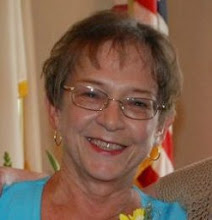March Came In
Like A… Caterpillar?
For
one thing, I made a quick trip to California, primarily to visit one of my
dearest friends who is mortally ill. I figured I’d rather see her in person one
last time than go to her funeral. The month didn’t get much better from there, as
it was fraught with my own health issues, veterinarian bills and plumbing
problems. Grumble.
Therefore,
since I’m sick of it all, this month’s blog isn’t going to be about any of that
bad stuff. It’s going to be about the kinds of research a person who writes
historical novels has to do. Because I write books set in the 1920s, I need to
know a lot of stuff about the area in which the books are set. In the case of
my Daisy Gumm Majesty books, that means I get to learn about Pasadena and
Altadena history. Sometimes this information isn’t as easy to come by as
figuring out what people did and ate in ancient Rome. The twenties are
historical, but they’re recent enough that some things aren’t well documented.
For
instance, I had to find out what law-enforcement agency took care of crime in
Altadena, California, in 1924. Altadena is a smallish (well, it used to be
smallish anyway) community just north of Pasadena. Unincorporated, it’s part of
Los Angeles County, but it’s not officially part of Pasadena. So, I looked
on-line and couldn’t find out. Then I decided what the heck and called the
Altadena Historical Society. Darned if my question wasn’t answered by a woman
with whom I went all through school! I mean, we met years ago. Plus, we evidently looked so much alike when we were kids,
our parents often tried to pick up me when they wanted her and vice-versa.
However, Kathy found out for me that the Altadena area was served by the Los
Angeles County Marshal’s Office, and that their headquarters were pretty much
on Lake Avenue and Foothill Boulevard. Mind you, Foothill Boulevard, where Mrs.
Bissel in my Daisy books lives (in the house my aunt used to own), was renamed
Altadena Drive in the 1950s or 1960s, but it’s still there. The marshal’s
office was just down the road and across the street a bit from Mrs. Bissel’s
house.
Then
there’s food. Daisy’s Aunt Vi is one of the better cooks in the universe. In
fact, if she were a man at the time the books are set, she’d have been called a
chef and made boocoo bucks. Boocoo, by the way, is an expression from the
1920s. Anyhow, from time to time, I also have to find out what people ate back
then. It’s fun research to do, because I love food. But cooking was a heck of a
lot harder back then than it is now. No blenders. No food processors. No
Instant Pots (although folks used pressure cookers). No automatic dish washers.
No electric mixers. No plastic or aluminum wrap, although they did have waxed
paper. No store-bought bread, for Pete’s sake! Fortunately for Daisy and her
family, Vi makes the best bread in town.
And
today I had to look up meatloaf. Meatloaf? Yes, by golly, meatloaf. Good thing
for me one of my dear Facebook friends, Andie Paysinger (http://www.asenjigalblogs.com), is a genius
at cooking history. She and my niece Sara Krafft (also a research maven) both
showed me to a great web site for researching food history (http://www.foodtimeline.org).
Meatloaf for most of us is a pretty easy meal to prepare, and I personally love
it.
However,
life was different in the 1920s. For one thing, in order to make a meatloaf,
Aunt Vi had to grind her own beef, pork, veal, chicken, and/or whatever other
kinds of meat she wanted in her loaf. Not a problem, because Vi had one of
these handy-dandy tools:
Then,
of course, we return to the problem of bread. It wasn’t pre-sliced or
store-bought in those days. You had to knead your flour, yeast, water, milk,
butter and/or whatever, form it into loaves, and then bake it in your own oven.
Fortunately for Aunt Vi, both her employer (Mrs. Pinkerton) and her family have
self-regulating gas stoves. However, after you bake your bread, you then have
to cut it. Both Daisy and I suffer a deficit in the bread-cutting area. We
can’t cut a straight piece of bread from a loaf to save ourselves. Fortunately,
Daisy has other people in her life who can cut bread for her. I’m stuck all by
myself with odd-looking slices of bread. What the heck. There are worse
problems to have. Here’s a picture of a lovely stove Aunt Vi might have cooked
on at the family’s residence. Needless to say, Mrs. Pinkerton, who is rich as
Croesus, has an even bigger and fancier one in her mansion.
Oh,
and no chopped nuts! You had to crack your own nuts and chop them if you wanted
to use nuts in something. Wow. Life must have been hard indeed. But you could
still use your self-regulating gas range once you prepared your nut loaf.
Thank
you!





No comments:
Post a Comment